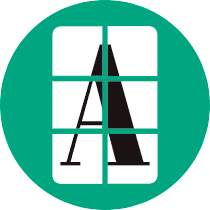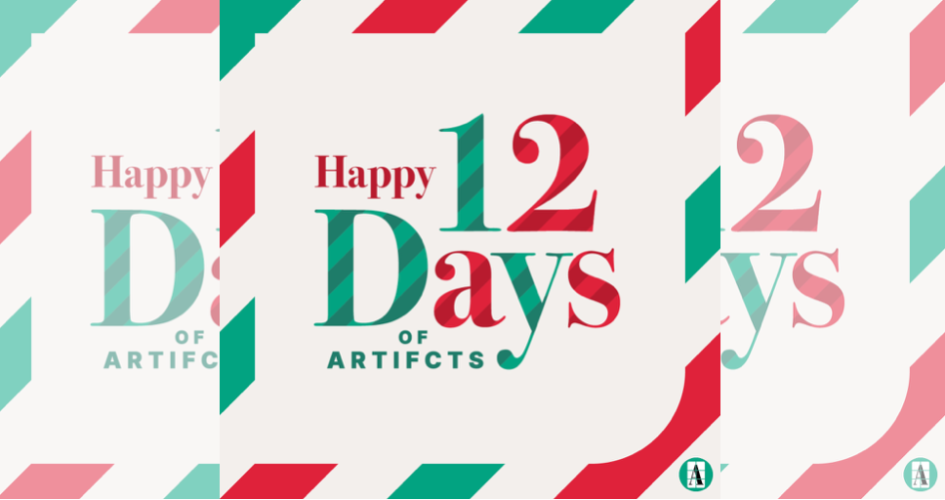We added the garage to our “Around the House, with Artifcts” series for 2025 based on the simple realization that maybe more than any other space in the home, the garage is a true multitasker.
-
-
-
Garages protect your vehicles. Not only from hailstorms and theft, but from the toll that extreme temperatures take on the materials, too.
-
Garages store tools of life. This might be lawnmowers and snowblowers. It might also be every hammer, nail, screw, cleaning chemical and paint, and garden tool you can imagine.
-
Garages offer habit space. For some this is a petite to full-blown home gym, for others a woodworking area, welding corner, or at-home bike shop.
-
Garages, oh so often, provide spillover storage. Just as new lanes on a highway nearly guarantee more cars will flow through than ever before, the more space you have, the more you fill it. Sometimes this even puts at risk family treasures and heirlooms for lack of anywhere 'else' to store them.
We’ve also enjoyed exploring how this multitasker of a space takes on the personality of its owners and requires creative and safety-minded solutions to keep them functioning in a way that supports us, not frustrates us. Read on!
_________________
Four Garage Personalities
On full display in any garage is an owner’s priorities, habits, and hobbies, giving the space a personality of its own. We’ve discovered four garage personalities:
-
-
- The Immaculate. It’s a well-designed, spotless dream. Painted drywall, epoxy or stained concrete floors. Pricey custom shelving. High-def televisions and supporting sound systems. Maybe even artwork and lighted signs.
- The Classic. A garage that houses vehicles and has space for all the essential tools that make a home run. It’s not essential that it even have drywall. It certainly does not rely on custom cabinets when a few shelves or some freestanding cabinets will do the trick.
- The Whozits and Whatzits. Often poorly organized and contained, storing everything from the tools you commonly associate with a garage to all the spillover content of a home. Examples we’ve seen include cooking gear and glassware that fail to fit inside kitchen cabinets, bins of seasonal clothing, and spare luggage. You just might still fit your car in here, but more likely not.
- Converted. Literally or figuratively, you’ve sacrificed the garage for storage, a spare lounge space, or another function. Either way, no car takes refuge there at any time.
We interviewed Scarlett who lives commuting-distance outside New York City, in a quiet, tree-filled neighborhood. Surely in this neck of the woods, there would be an abundance of home maintenance tools and equipment, such as snowblowers and lawn mowers, as well as toys, like sleds, required for this family of five. We wanted to know, “How do you make it all work in a single-car garage?”
“Easy! Convert! Our garage is a tiny one car thing at the end of a 90 ft driveway. When we moved in, we quickly figured it would never make sense to park there, so we decommissioned it (shortened the driveway, made a cut out for our cars and extended the lawn), and the garage became storage from the get-go. The garage stored a hodgepodge of camping equipment, bikes, snowblower, sleds etc. Unfortunately, because of the state of the garage, you would not want to store anything you cared about in there.
The garage was such a decrepit after thought in our lives, purely functional, that the town even planted trees in the park abutting our home to block it from view! Truly an embarrassment.”
Perhaps you can relate. Or perhaps you relate better to one of the other three garage personalities. In either case, read on for coverage of both garage dangers and pro tips for wrangling it into control to meet your needs.
Common Garage Dangers
Before we go on with tips to help you declutter your garage if it’s not serving your needs, we want to highlight a few of the inherent risks that come with how we tend to use our garage spaces.
Garages are highly problematic from both safety and preservation lenses. And if you are new to a geographic area and moving from one climate zone to another in particular, you may get caught off guard.
Batteries. We beg you: only charge batteries when you are there to monitor for potential fires. Keep an extinguisher in the garage. Unplug the charger and disengage any battery from its device—e.g. leaf blower, lawn mower, power drill, etc.—when not in use. And be sure to test the fire alarm in the garage every season.
Papers, plastics, and fabrics. Non-climate-controlled garages will take a heavy toll on fabrics, papers, and plastics. Such as? Such as the very carboard boxes you’re storing stuff in (bugs love cardboard, too), the plastics in your bike helmets, the glues in your wreaths and holiday ornaments, and delicate family heirlooms and documents.
Chemicals. How temperature stable are those paints, solvents, insect sprays and more? How long can you store them in your garage and still safely use them? Keeping safety and effectiveness in mind, it may be time to dispose of some, just to be safe. A simple online search will yield recycling guidelines for everything you can imagine and locations or pick up options for disposal. (Psst… this applies to batteries and lightbulbs too!)
Top Tips to Help You Declutter Your Garage
That big garage door and attached driveway offer you a huge advantage in decluttering and organizing this particular space, and leads us to tip #1:
Empty it. Moving everything out of the garage lets you start with a clean slate. It very likely also puts you on the clock since you won’t want to leave your things out overnight. Obviously, know the weather outlook first.
Check expiration dates. Like spices in your kitchen, check the expiration dates on all chemicals, batteries, and even sports gear—like sports pads, helmets, and spare car seats—and set them aside to recycle, making a list of items you also need to replace. Use painters' tape to attach that list to a wall for all helpers to contribute to.
Consider your lifestyle and stage. And be honest with yourself, not aspirational. If you have kids, and they have literally outgrown equipment or toys out there, great, set those aside. If you moved on from a hobby or sport or have single-use tools for that one time you dug a fence post, set all of that aside, too.
Feeling a bit overwhelmed or sad to see some things go? Artifcts is here to help. This is the perfect time to snap pics and record the memories of items that help tell your life’s stories. That's what tv host and decluttering expert Matt Paxton did with his son to make room for a home gym in the garage. Read the full story.
Focus first on frequently used items. Grab a pen and paper. You’re going to make a list that everyone in your home (and professionals, if you have hired them) can reference. Visually scan all the ‘stuff’ you store in your garage. What do you use on a daily and/or weekly basis? Keep the timeframe that narrow to now prioritize how those items are displayed, stored, and accessed.
Great examples of likely high-use items include packing tape, scissors, and utility knife (all commonly used for opening the abundance of packages we receive these days) as well as reusable shopping bags that we hang when emptied and grab as we walk out the door.
Another great example: bikes. It’s absolutely terrible advice to recommend installing overhead storage racks to hang bikes if you use them frequently, especially if the people using them won’t be able to easily or safely get them down. Instead, use bike hooks that let you fold the bikes flat against the wall for accessibility and a minimal footprint.

Bikes that hinge "closed" as they hang on the wall, like a book, are accessible and take up less space. Two cars can still fit inside this garage! Shown is the Velo Hinge Wall Mount by Feedback Sports.
Equally terrible advice: installing peg boards for every tool under the sun when you use four of them on a regular basis. That makes for not only a poor use of space for your regular needs but intense visual clutter, too, which may be hard on some members of your household depending on their organizing styles. If you're familiar with the four organizing styles created by Clutterbug, these peg boards are great for "bees" but painful for "crickets."
Consider “over and under” storage options. Maybe you’ll hang your ladder just feet off the ground, because that then opens up the ground space for storing a high use or maybe very heavy item you want within reach.
Perhaps you need certain other items within reach, but they take up a lot of space. Go vertical with the storage rather than consuming shelves and floor space. Stretch your imagination on how you store what you choose to keep.

Hanging this ladder with a simple hook means more storage space below it.
Clear is king. Remember our story about the deinfluencing trend from earlier this year and the man who went on a clear bin buying spree for his garage? He was able to smartly sort, contain, and keep accessible all the components and equipment he needed for his hobby and home life using clear bins and a few wire baskets. You may also want to add labels but be sure to choose labels that you can easily remove if you want to change out what you’re storing.
Feeling inspired yet? Good luck, and happy Artifcting!
###
© 2025 Artifcts, Inc. All Rights Reserved.














 The first four days of our 12 Days of Artifcts challenge. Objects with stories, your stories!
The first four days of our 12 Days of Artifcts challenge. Objects with stories, your stories!



